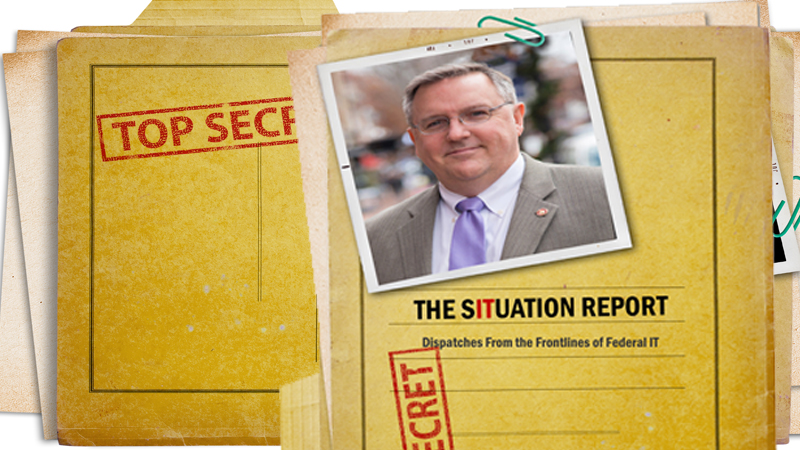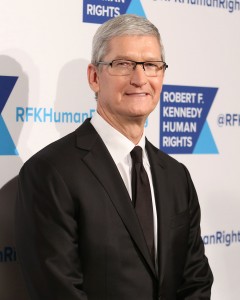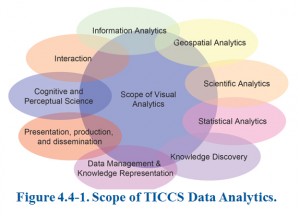The Situation Report: Apple & Big Data Terrorists

Why Tim’s Duck May Be Cooked
A group calling itself Fight for the Future is planning to hold rallies next week outside Apple stores around the country to protest the recent court order that would compel the company to build a software backdoor to help the FBI unlock the iPhone used by one of the terrorists responsible for killing 14 people and wounding dozens last December in San Bernardino, Calif.

Not surprisingly, Apple CEO Tim Cook has vowed to fight Uncle Sam every step of the way, calling the government’s request that Apple create software that would help the FBI circumvent the security protections on the iPhone used by the terrorist in San Bernardino “too dangerous.”
The Situation Report is picking up strong signals that Cook and Apple may be playing a dangerous game of chicken at a time when U.S. public opinion seems capable of swinging forcefully in favor of supporting government efforts to identify and stop terrorists in our midst. Even recent surveys of millennials show that private companies like Apple and Google are in no position to take the moral high ground on privacy and security, much less pretend that they know best when it comes to the balance between security and privacy.
In fact, a new MeriTalk survey found that more than half (54 percent) of tech students ages 18-25 said they trust the government more than they trust private companies with their personal data. In addition, when asked if Edward Snowden—the former contractor responsible for exposing NSA Internet and telephone surveillance programs—is a terrorist or a freedom fighter, the same percentage (54 percent) said they were “unsure.”
Public opinion shifts. And the balance that Cook and others argue they support may be shifting in favor of enabling the government to better protect us from these killers. Cook, however, is unlikely to acknowledge such a shift. My Cupertino, Calif.-based listening post has picked up strong signals that Cook’s real concern is losing market share overseas by cooperating with big, bad Uncle Sam.
Wanna know how I really feel about this case? Here’s Why You Should Side With the FBI, Not Apple, in the San Bernardino iPhone Case.
Big Data to the Rescue
I picked up an interesting document recently when I cleared my Department of Homeland Security dead drop site. There’s been a lot of attention recently on DHS’s interest in social media monitoring. But The Situation Report has received strong intelligence that DHS is also currently reviewing a proposal to leverage big data analytics to identify and uncover lone wolf terrorists—like the individuals who carried out the attacks in San Bernardino—before they strike and to proactively counter terrorist recruitment messaging and radicalization efforts.

DHS has been in possession of a major proposal by a group of experts who have worked social media exploitation on behalf of the U.S. Central Command (USCENTCOM) and Special Operations Command (SOCOM), and continue to support various cyber projects at the NSA. According to the proposal, the Terrorist Ideology Counter Communications Strategy (TICCS) “will proactively identify Lone Wolf Terrorists in real time and before they strike. The TICCS application of dynamic and automated big data predictive analysis will identify emerging Lone Wolf terrorism triggers and hot spots.”
According to DHS sources, who spoke to The Situation Report on condition of anonymity because they were not authorized to discuss internal proposal reviews, a TICCS Monitoring and Information Sharing Center would be established to conduct automated analysis on the data collected, including:
- Analysis of Competing Hypotheses (ACH): A tool to aid judgment on important issues requiring careful weighing of alternative explanations or conclusions. ACH is an eight-step procedure grounded in basic insights from cognitive psychology, decision analysis, and the scientific method.
- Social Network Analysis: SNA is fundamentally about entities and the relationships between them. As a result, this method has a number of variations within the intelligence community ranging from techniques such as association matrices through link analysis charts right up to the validated mathematical models.
- Multiple-criteria decision-making or multiple-criteria decision analysis: MCDA is a subdiscipline of operations research that explicitly considers multiple criteria in decision-making environments.
- Link Analysis: A technique our team uses to evaluate relationships (connections) between nodes. Relationships may be identified among various types of nodes (objects, people, places, things, transactions). Link analysis focuses on analysis of relationships among nodes through visualization methods to find matches in data for known patterns of interest, find anomalies where known patterns are violated, and discover new patterns of interest.
The TICCS Monitoring platform also provides 24/7 blanket coverage of real-time television — capturing, digitizing and indexing 40 hours of live broadcast programming from 2,000 channels in all 210 U.S. Nielsen Markets and four continents every 60 seconds. U.S. Radio coverage extends to more than 150 top stations. Print and online data comes from the following:
- 55,000+ online news sources
- Newspapers, magazines, newswires, trade publications, and professional blogs
- Limitless virtual blogs, pages, and groups
- Social networks
Send your intercepts for The Situation Report to dverton@meritalk.com
